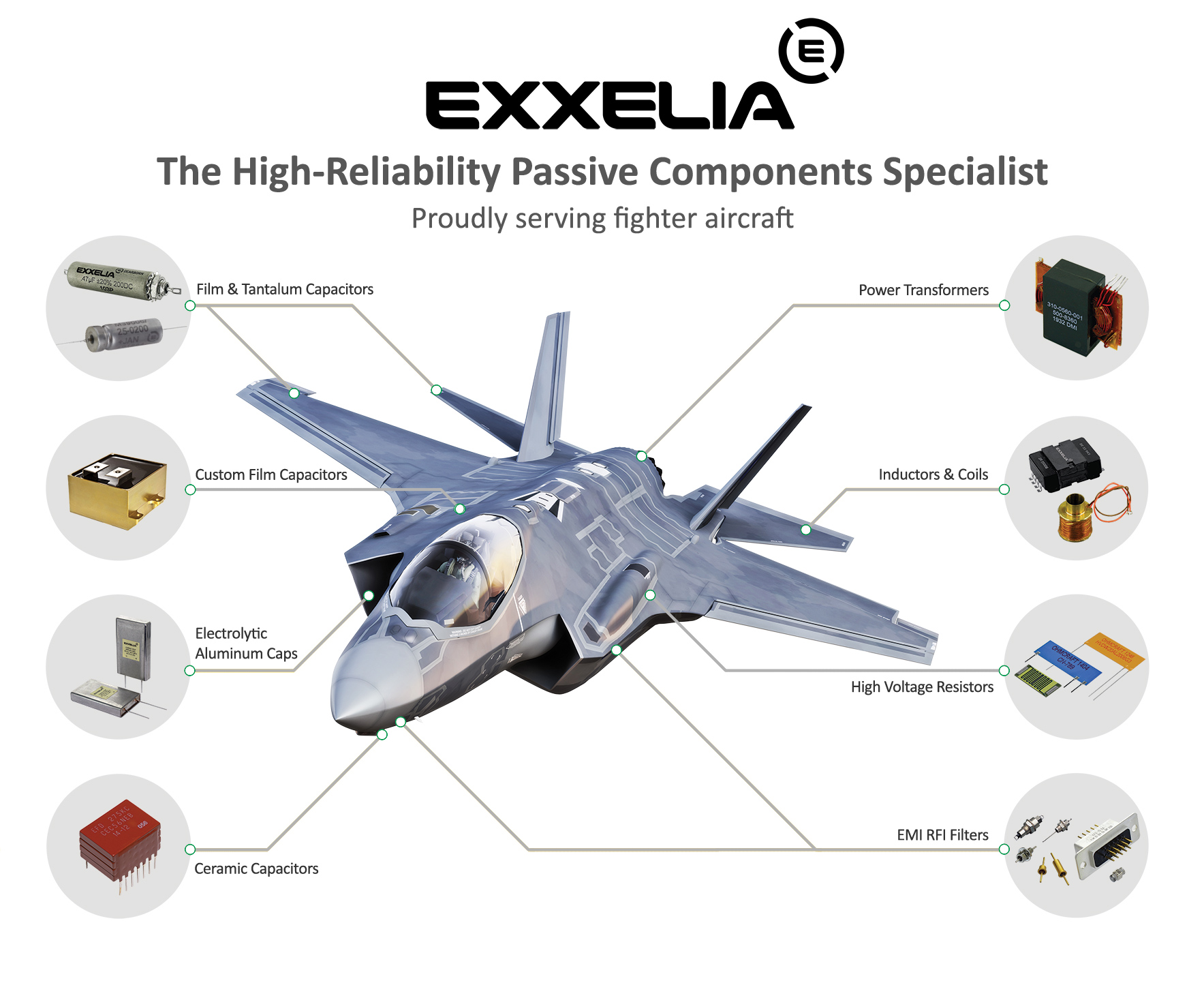Space & Military Grade Passives at CMSE - booth # B13 -
CMSE is one of the most recognized conference dedicated to the use of component in military and space systems. As a key supplier of highly reliable passive components, Exxelia will be displaying in booth B13, a wide variety of military and space-qualified capacitors (ceramic, tantalum, film, electrolytic aluminum), wound magnetics solutions and EMI/RFI filters.
Two new ranges of MIL-qualified tantalum capacitors: MIL39006/22 & MIL39006/25
The recently introduced ranges of MIL-qualified tantalum capacitors will be showcased on the company booth (B13). MIL 39006/22 and MIL 39006/25 respectively equivalent to CLR79 and CLR81 types feature hermetically sealed cylindrical tantalum cases and axial leads are available in T1, T2 T3 and T4 cases with extended capacitance and voltage ratings. MIL 39006/22 is qualified for voltages from 6V to 125V and provides from 1200µF @ 6V to 56 µF @ 125V. MIL 39006/25 is qualified for voltages from 25V to 125V and delivers from 680µF @ 25V to 82 µF @ 125V. Both ranges combine high energy density with a large operating temperature range of -55°C - +125°C and H vibrations and shocks resistance.
Alsic 20G, Aluminum Electrolytic capacitors with large operating temperatures
Alsic 20G is a range of radial leaded aluminum electrolytic capacitors for typical use in military and aerospace high frequency switch-mode power supplies requiring advanced performance under all operating conditions. Alsic 20G operational rated life is 8,000 hours at rated voltage and 105°C, and provides from 330µF @ 500V to 80 000μF @16V. The range features ruggedized design with insulating aluminum case and tin coated leads. With capacitance stability at high temperature, low inductance and impedance, competitive ESR and high ripple current, these capacitors are perfectly adapted for mission-critical applications.
C48X dielectric: NPO and X7R advantages combined
Under working voltage, C48X dielectric provides equivalent capacitance values to an X7R material with the advantage of a very low dissipation factor (less than 5.10-4). It can also withstand very high dV/dt, up to 10kV/µs which makes it perfect for pulse and charge/discharge applications for firing units. Exxelia’s C48X capacitors, available from 200V to 5kV with EIA sizes from 1812 to 16080, are ideally suited for power applications where heat dissipation may be detrimental to performances and reliability, such as 400Hz Aircraft, Ignition systems, and Space, or as Precision/filtering capacitance in thermally challenged environment for AC or DC voltage.
